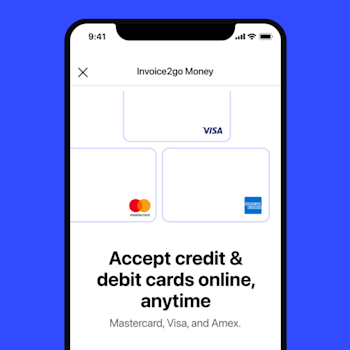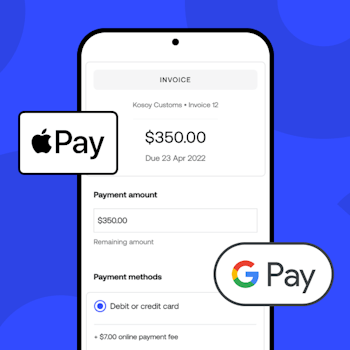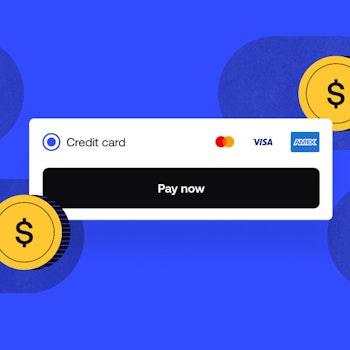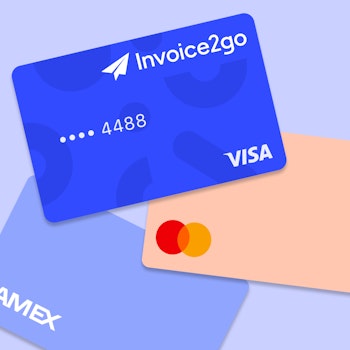
Everything you need to know about LinkedIn small business marketing – Part 1
If you’re not marketing your small business on LinkedIn, you have an untapped opportunity. No matter the industry you serve, this platform ranks among the most effective marketing tools for self-employed professionals – along with Facebook and Instagram.
If you’re not familiar with LinkedIn or think it’s just for traditional job seekers – don’t worry. We know the details of social media platforms probably aren’t top of mind when you’re thinking about running a successful business. You’re likely most concerned about the quality of your work and the rapport you build with your customers in person. Spending time online may not seem so valuable at first.
Still, don’t rule out LinkedIn just yet. We’re living in uncertain times and this platform has the ability to boost awareness of your business, increase your website traffic, search rankings, and more.
Now more than ever, it’s essential to learn new skills to help your business continue to thrive. Improving your abilities with online marketing can help you win more jobs now and keep your business secure for the long term.
Since most LinkedIn features are free to use, with the help of this straightforward guide you have little to lose and potentially lots to gain. We recommend you give it a try for a few months and measure the impact it has on your company.
Let’s take a closer look at its benefits, then learn how to set up and use both a personal and a business account. In part 2 of this series, we’ll go deeper into specific LinkedIn small business marketing strategies you can use to network and win more business.
Why should I use LinkedIn as a self-employed professional?
This platform has more than 600 million users – 40% of which use it daily. That means no matter where you live in the US, you have the opportunity to network with people in your community and win more business. The 2 main ways the platform can help you:
1. Get more exposure and high-quality leads
Most of your prospects will likely research your business online before emailing or calling you. Chances are they’ll do a brief Google search for services like yours and then click the top results on the first page.
Having a LinkedIn business profile improves your odds of showing up on that first page of Google – thanks to the keywords you put in your profile and posts. Also, social selling leaders get 45% more sales opportunities than those who sleep on this opportunity.
As people in your community like and interact with your content (more on this later in the article), your profile will come up in more searches. With a little work and no money, you can get more eyes on your company name.
2. Connect with other industry partners
What makes LinkedIn different from other social media platforms is it’s specifically for professionals. Here you can establish partnerships in your area related to the type of business you want to do. It’s one of the cheapest and easiest ways to establish yourself as the go-to business for your specialty.
With both individual and business profile options, you have a variety of opportunities to stand out and boost your professional credibility.
Check out some of these small business LinkedIn examples.
How does LinkedIn small business marketing work?
LinkedIn has free and paid subscription memberships. To start, you’ll want to set up a Basic Account for you as an individual, which is free (we’ll show you how to do this in the next steps).
This account will allow you to connect with people and post content – including photos, videos, and blogs. After you establish your personal profile, the next step is to build one for your business.
Important: While the basic account is the best option when starting out, it does have limitations about who you can connect with and message. You can only message people connected to you directly or if there’s a 2nd-degree connection (connected with one of your contacts on the platform). To contact people outside of your network, you’ll have to use LinkedIn’s paid messaging service, called InMail.
Once you’re more established on LinkedIn, the Premium Business Account may be useful for some – especially if you plan to do a lot of cold prospecting. It does, however, come with a monthly fee.
This account gives you 15 InMail messages each month to reach out to people outside of your network. It also lets you see everyone who’s viewed your profile in the last 90 days and the search terms people use to discover your business.
Whatever account option you choose, you’ll want to take advantage of these features:
Your newsfeed
Similar to other social media platforms, LinkedIn has a feed that shares updates from your connections. This is a great resource to keep you informed about your industry and community. Sharing content and getting involved in online discussions has the bonus of making your company more visible in searches.
Search business and personal profiles
Once you learn how to navigate LinkedIn’s search tools, you’ll quickly find companies and individuals to connect with. You can scan profiles to learn about the professional backgrounds of all your contacts.
Direct messaging
When browsing connections on LinkedIn, you’re able to see the degrees of separation between you and others. For example, let’s say you find someone you want to connect with and notice you have a contact in common. You could ask that common contact to make an introduction – which can help you build your network and ultimately grow your business.
Recommendations and testimonials to make you look good
When you look for a product or service, chances are you read reviews from other people. On LinkedIn, you can have other professionals write recommendations about you and your work on your page.
This is a great way to build trust with those who visit your profile. You can also build stronger relationships with your network by writing recommendations for those you love working with.
If this sounds daunting or like a lot of work – don’t worry, this platform is built to be easy to use. With a little bit of time, we’re confident you’ll be navigating it like a pro. Are you ready to get set up? Here we go:
How do I set up a personal LinkedIn account?
Before you can create a LinkedIn page for your business, you first have to set up a personal account. There are some essential requirements you need to fulfill, so make sure you follow all these steps:
Step 1: Visit LinkedIn’s website
Click Sign Up on the upper right-hand corner of the screen. Then, enter your first and last names (no nicknames), your work email, and a password. Click Join Now.
Important: If possible, don’t use your personal Gmail or Hotmail email address here. To create a business page later, you need to use the email address from your company’s domain. If you don’t have a company email yet, don’t worry – you can still set up your personal account. You’ll just need to get a business email before you can move on and create a page for your business.
Step 2: Start filling out your profile
Next, the website will walk you through some steps to establish your profile. Enter your zip code, your company name, and your job title. LinkedIn requires you to thoroughly fill out your personal profile before you can set up a business page. So, don’t skip this step.
Follow the steps to verify your account with your company’s email address. Enter your work and education history. Make sure to list yourself as an employee of your company.
After you finish those steps, LinkedIn will try to connect you with the profiles of people you may already know. This is a great place to start building your network. If you see familiar faces – connect, connect, connect.
About Section
Imagine this as your 30-second elevator pitch. Here you want to write 1-2 paragraphs explaining your mission and highlighting your skills. If you’re not comfortable writing paragraphs, bullet points can be an effective way to clearly underline what makes you and your business stand out.
When writing this section, think about who you want to network with. What kinds of opportunities interest you most? What do you do best? Here are a few tips that can help you.
Work and education experiences
Make sure to add all work and education experience that’s relevant to your company. Put yourself in your readers’ shoes – what would be most interesting for them to learn if they’re considering doing business with you? Also, if you have great photos or videos of your work, upload and showcase them in this section.
Add your skills
Adding the skills most relevant to your job helps your profile stand out. After you add skills, connections can endorse them (show approval that you can do them well). These endorsements increase the likelihood you’ll be discovered for opportunities that interest you.
Ask for recommendations – and give them too
You can ask your colleagues, partners, and clients to add recommendations to your profile. You can request as many recommendations as you’d like, so reach out to those you already know who love your work.
A useful strategy is to reach out to other professionals you’ve worked with and ask them to swap testimonials. You write a great review for them and they write a stellar one for you.
Step 3: Upload a professional profile picture and background image
An up-to-date professional profile picture is essential to small business marketing on LinkedIn. You want to make a great first impression, and your photo is likely the first thing people will notice when they visit your profile.
A headshot will likely serve your best. If you already have a professional photo, that’s perfect. If not, it’s worth it to reach out to a pro photographer in your community to get a great shot of you. You can also get started with a clear, professional-looking photo of your face taken with your smartphone.
Profile photo tips:
- The photo is of you and only you.
- The lighting is good, and the image is of high quality.
- Wear clothes you’d sport on a typical day on the job.
- The image should represent a company you’re proud of.
You also have an opportunity to set a background image for your page. Pick a high-quality photo that compliments your profile picture. Consider a pic of a job site, an image of your city, or another photo you feel puts your company in a positive light.
For some examples of good LinkedIn profile photos, have a look here.
Excellent work – at this point, you’ve signed for LinkedIn and filled up your profile. You’ve started adding connections, and you’ve even reached out to 1-2 people to write a recommendation for your page.
Try posting some content related to your field and comment on what other people post. Remember: you don’t need to spend a lot of time on this. If you’re busy, you can calendar in just 15 minutes per workday.
Once you’ve completed all these steps, you’re ready to set up a business account. Let’s dive in:
How to create your business’s LinkedIn account
To create a business account:
- Your personal profile needs to be at least one week old.
- You need a company email account and have it registered on your personal LinkedIn profile. Here is a useful resource for more information on domains and business email addresses.
OK – you might be asking, “Do I really need a personal page and a company page?” We think they have essential unique functions, and those who are most successful on LinkedIn utilize both.
Your profile tells your personal story – your company is a separate entity with its own. A business profile can further increase visibility, highlight your services, engage followers, and let you post job openings.
After you set up your company page, you want to link your personal profile by editing your Experience section. Even if you’re the only person who works for your company, this is an important step. If you have any employees working for you, encourage them to do the same.
To set up your business profile, first, log in to your personal account. In the upper right hand of the screen, you’ll see the tab Work. Move your cursor over work, then select Create a Company Page.
Next, select the type of company page that you want to create. Chances are you’ll select the Small Business option.
Fill out your business page
- Start by writing your company name. Make sure it’s straightforward and gives a clear idea of what kind of business you do.
- Create your LinkedIn URL. You can customize this link, so ensure it’s short and simple.
- Enter your company’s website.
Company Details
- Select your industry, company size, and company type. Remember, you can always go back to change this information later.
Profile Details
This next section has 2 sections that will take a little longer to complete. However, don’t skip this section – these are essential.
1. Your Logo
Whether it’s clothes, cars, or electronics, the brands we trust most all have something in common: easily recognizable logos.
Your logo matters. This image helps your company look professional, memorable, and can boost sales. LinkedIn data shows that businesses with logos get up to 6 times the web traffic.
If you have a logo, great. You can upload it and move on to the next steps. If you don’t have one yet, we think it’s well worth the investment. Here are a few ways to get one quickly without breaking the bank:
Upwork
This is perhaps the most popular freelancing platform with over 300,000 designers. This site enables you to post jobs and lets you reach out to freelancers directly. It has plenty of search filters to help your search quickly and a built-in work diary and workspace to collaborate efficiently.
Fiverr
Here is another excellent place to find logo designers. Their website lets you post jobs and contact freelancers directly. The site also highlights each freelancer’s seller level to find the best talent for your needs quickly.
2. Your tagline
Write a compelling summary of your company and its mission. You can adapt your About statement from your personal page. Note that you have just 120 characters here (1-2 sentences), so it will need to be more concise.
When everything looks good, check the verification box and click Create. Your business page is now live!
Use the completion meter to complete your page
The more complete your page is, the more views it will likely receive each week. According to LinkedIn, that could mean 30% more traffic.
Use the completion meter on the page to update all unfinished sections of your business profile. Remember to fill out all this information thoroughly and thoughtfully. Search engines like Google pick up the keywords you write, and this can bring more users to your page. Be sure to add your location and give plenty of detail about your services.
Reviews and Testimonials
Just like on your personal page, ask your connections for service reviews or testimonials. These additions to your profile can help build trust with your page’s visitors.
Make the most of your LinkedIn accounts
You’ve frontloaded the work and the hardest part is now over – you’ve set up both a personal and business LinkedIn account. You’ve entered all the essential information about your professional life and details of the services your business offers.
There are now 2 main things you’ll want to do to get the most out of your new accounts:
1. Create content consistently
Strong engagement on social media can lead to an increase in calls for business. Remember, this is a different audience than Facebook or Instagram. You’re connecting with other professionals, so what you post should be related to your work and industry. Make posts that highlight your knowledge and skills.
You can share updates about your company, industry-related news, videos, and other media that will be interesting and valuable to your followers. Consider posting high-quality images of your latest project.
2. Engage with your online community
While learning, discussing, and sharing information online can be fun or interesting – it also serves an important business purpose. When people like your content on LinkedIn, your posts will show up in the feeds of more users. More likes mean more free exposure for your business.
If someone shares your post, thank them. If someone asks a question on LinkedIn related to your specialty, answering professionally can help you stand out. In the case that you receive negative comments or messages, be sure to respond politely and sympathetically. This could be an opportunity to share new information or clear up a misunderstanding.
There you have it – you’ve now known the basics of LinkedIn. Not only do you have a professional personal and business account, but you also understand the best mindset for posting content and engaging with other users online.
Take some time to get comfortable with the platform and to congratulate yourself for taking a big step to help your business grow and stand out.
There’s still a lot more to learn about LinkedIn. When you’re ready to learn more advanced strategies, join us for part 2 of this series. We look forward to seeing you there!
Related Articles

How to accept credit card payments on Invoice2go in 3 simple steps

Accept payments online via Apple Pay and Google Pay

Must-not-miss write-offs as you wrap up 2022 year-end finances

5 ways accepting credit and debit card payments helps your business stay resilient

4 easy ways to increase cash flow today

What is Small Business Saturday and why is it important?
The features and surprising benefits of a well-designed packing slip
